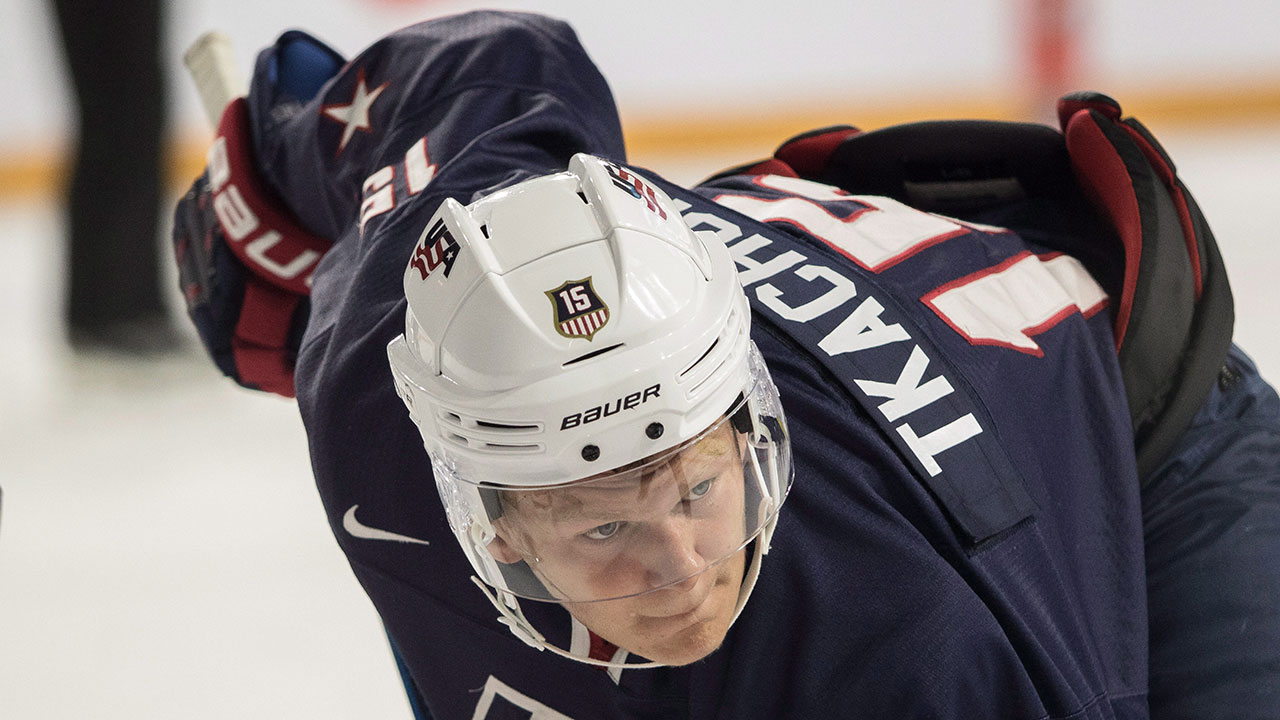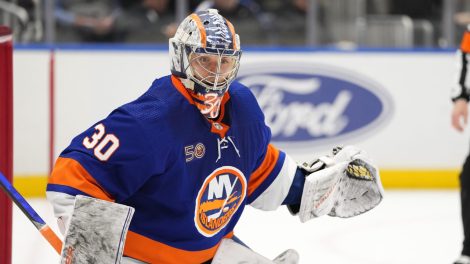The National Hockey League unveiled its new enhanced statistics package to much fanfare on Friday. In a glitzy, self-congratulatory event, the league applauded both its statistical innovations and its dramatically improved presentation of the numbers. The sad reality, however, is that as is often the case with the NHL the actual substance of the announcement couldn’t come close to matching the vigour with which it trumpeted its own achievements.
Commissioner Gary Bettman described today’s announcement as “the dawn of a new information era” for hockey. A more honest assessment came from Chris Foster, the league’s Director of Digital Business Development, albeit unintentionally, who promised that the NHL was ready to take the leap and “make our stats site ready for the 21st century.”
The 21st century, of course, started on Jan. 1, 2001 and while it’s an exaggeration to say the league’s new stats website is 15 years out of date it’s not much of one. None of the features made operational on Friday revealed any data that hasn’t been available through independent websites for most of the last decade. If the NHL’s intent was to match the kind of information that’s been available on a website like behindthenet.ca since the 2006-07 campaign, congratulations are in order. If it was trying to innovate, it’s still a decade behind.
But it is a start. The league has been sitting idly by while interested fans discovered information in its raw data that it didn’t even know existed; Friday’s announcement not only gives credence to the efforts of these fans, but also makes the data more accessible to a broader audience. In terms of improving the conversation about the game, that’s a big step forward; it drags the concepts further into the mainstream and offers at least the opportunity of increased evidence-based discussion of NHL hockey.
The league also promised new information would be added, and while many of the presented examples were completely useless (it’s great that it will eventually be possible to see which 6-foot-1 or taller Ontario-born Western Conference defenceman has recorded the most time on ice over the last five seasons, but anyone who can think of a relevant, predictive use for that data is smarter than I am), some weren’t. Historical data that has never before been available will be incredibly useful for comparing players across eras, and as the league brings in things such as location-based save percentage charts it will get closer to matching the work done by sites like war-on-ice.com.
Perhaps the most important thing the league did for the stats community was rename the numbers. There have been efforts within the community in the past to change terminology, to move past opaque names like Corsi and Fenwick to more intuitive descriptors like shot attempts and unblocked shot attempts. It never worked because the old names had character and incumbency and there was no central figure with sufficient authority to impose a new order. The old names aren’t ever going away, but the league’s decision to reduce them to an auxiliary position was the right one. Additionally, rebranding the whole endeavour as “enhanced” rather than “advanced” was a nice touch.
While those changes should reduce barriers and improve basic statistical literacy among fans and broadcasters, it was clear “basic statistical literacy” is still a hurdle not just for the people covering the game, but also for the people presenting the information. Consider an exchange between one of the reporters at the event and the presenters regarding shot attempts close (which the league website helpfully defines as shot attempts that occur when the score is within one goal in the first two periods or tied in the third):
Reporter: “This is to the two gentlemen who were involved in the architecture of the stats. The human element, what does that play into? I’ll give you an example: Close shots. What defines a close shot, or will that be explained to us as people navigate the site? Is close the slot, is close just inside the blueline, does that get explained or is that the judgment of somebody who’s actually doing the stats for the match?
Foster: “We’re taking the stats that are really coming from the scorekeepers. This is not changing how stats come in from the ice to it, we’re just putting it in a much cleaner and better way to understand it. The average length of the shot, that’s really coming from the scorekeeper, how they judged it and how they measured it. Where the focus is, really, is situational, because that’s we definitely know. What team was leading, was it tied, was the team behind, when in the third period was it? That way it really puts context into the stats themselves, and that tells a different story.”
Foster did a nice job of answering the substance of the reporter’s question without embarrassing him further, but it’s a question and answer that reveal a lot. Obviously, there will be a significant adjustment period for media members who aren’t already reasonably well-versed in this information. These numbers aren’t as complex as they’re often made out to be, but it’s easy to be confused by terminology that can be interpreted multiple ways.
The bigger issue is that this shouldn’t be an issue at all, because score-close material shouldn’t even be on the league website. It was an interesting and plausible way to eliminate score effects at one point in time, but its utility was always debated, at least until Micah Blake McCurdy convincingly debunked it earlier this season. It’s actually less useful than completely raw shot data, and significantly inferior to the current favourite, score-adjusted metrics.
The important thing, though, is that the league is finally showing a willingness to try. Despite Bettman’s claim that the NHL had “always over the last 20 years tried to innovate and use technology to improve the game” the fact is the league has been living in the dark ages for a long time. The fact that the league’s shiny new website is still inferior in substance to the one cooked up by a hobbyist nearly a decade ago is a powerful testament to that fact.
But at least the NHL is now putting the effort in. Assuming that effort continues, it shouldn’t be long before the league actually achieves the level of innovation that it congratulated itself on today.










